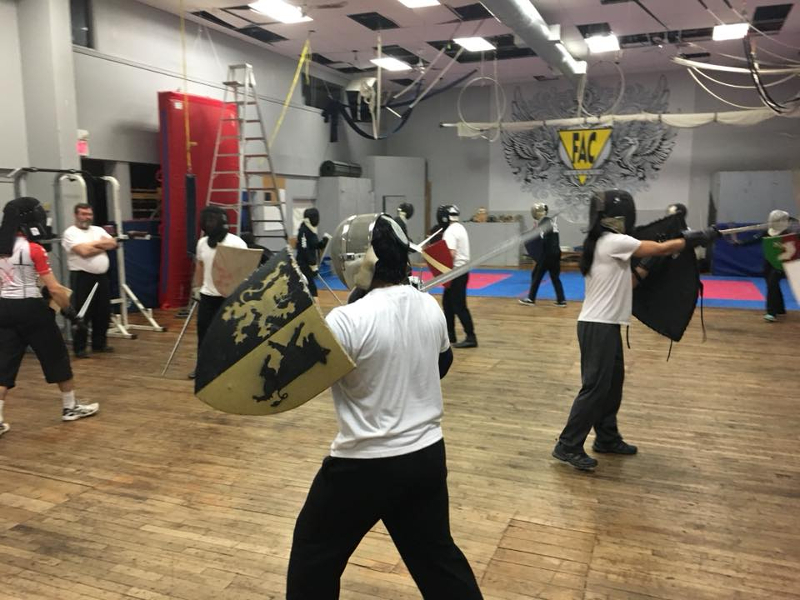Sword (spada) / Longsword (spada longa) 
The arming sword (also sometimes called a knight's or knightly sword) is the single handed cruciform sword of the High Middle Ages, in common use between ca. 1000 and 1350, possibly remaining in rare use into 16th century. Arming swords correspond to Oakeshott types XI, XII, XIII, and XIIIa. The longsword is a type of European sword used during the late medieval and Renaissance periods, approximately 1250 to 1550. Longswords have lengthy cruciform hilts with grips over six inches (15 cm) in length, straight double-edged blades often over thirty-five inches (89 cm) in length, and weigh between 2 (0.9 kg) and 4.5 pounds (2 kg). [1] [2]
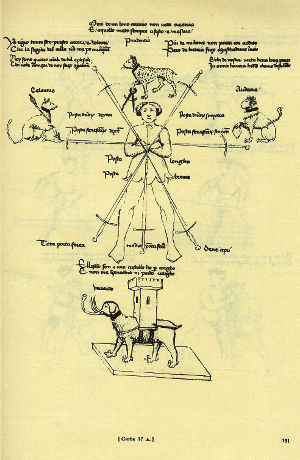
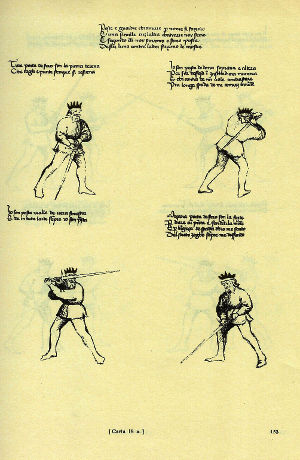
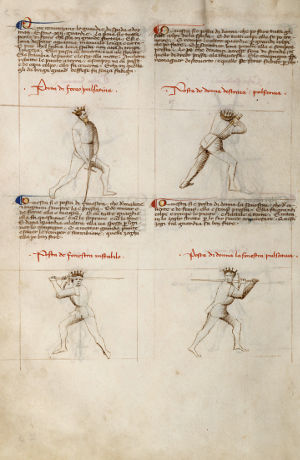
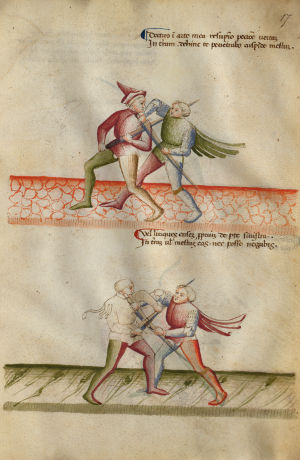
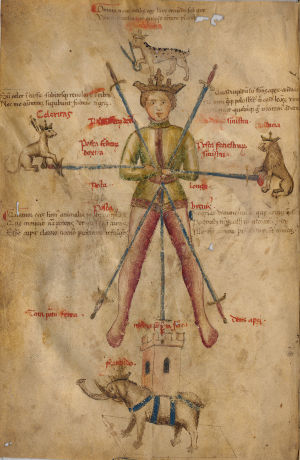
The longsword is commonly held in combat with both hands, though it may be used single-handed. Longswords are used for striking, cutting, and thrusting. The specific offensive purpose of an individual longsword is derived from its physical shape. All parts of the sword are used for offensive purposes, including the pommel and crossguard. Arming sword (short sword) forms one of the three foundational components of the core training program, i.e. arming sword (spada), grappling (abrazare) and dagger (daga). The arming sword was carried by individuals in the period to provide them defense in a civilian environment. The arming sword usually accompanied with a dagger were worn as part of the normal day-to-day wear of the period. The arming sword is a single-handed weapon and provides the maximum instructional benefits in terms of the student's developing their sense of timing and distance and other core fencing concepts.
The medieval longsword, langeschwert, or spada longa, was a specialized form of the knightly cruciform sword that developed in the early 13th century. [3] [4] Although it was initially developed to combat reinforced mail armour, by the mid-15th century, the longsword had also become a dueling weapon in the city streets of Europe. This style of swordplay became so popular that sparring fencing matches are recorded in Germany as late as the mid-18th century, two hundred years after the weapons usefulness on the battlefield had long since died out.
The roots of the longsword, or in more general terms "broadsword" can be traced directly to the swords employed by the Vikings, from the long two-edged iron swords of the prehistoric Celts. Many of these splendid weapons from the first four centuries B.C. have been found in various parts of Europe which have blades of an average length of 76cm (30") and are about 5cm (2") wide at the hilt. These dimensions reflect the average dimensions of the swords of the medieval centuries.
- The arming sword (also sometimes called a knight's or knightly sword) is the single handed cruciform sword of the High Middle Ages, in common use between ca. 1000 and 1350, possibly remaining in rare use into the 16th century. Arming swords correspond to Oakeshott types XI, XII and XIII and are generally considered to be descendant from the migration period or Viking swords. A combination of the Oakeshott and Peterson Typologies shows a chronological progression from the Viking sword to the "transitional sword", which incorporated elements of both Viking and arming swords. The "transitional sword" continued to evolve into to the presently defined arming sword. source: Wiktenauer. Category:Arming Sword. Retrieved: January 17, 2017.
- The Arming sword (or Knightly sword in modern terminology) was the most widespread type of sword in the European High Middle Ages. It was a straight, double-edged weapon with a single-handed cruciform hilt and a blade length of about 70 to 80 centimetres (28 to 31 in). The type is frequently depicted in period artwork, and numerous examples have been preserved archaeologically. The high medieval sword of the Romanesque period (10th to 13th centuries) develops gradually from the Carolingian sword (spatha) of the 9th century. In the Late Medieval period (14th and 15th centuries), late forms of these swords continued to be used, but often as a sidearm, especially of the estoc type, now called "arming sword" and contrasting with the two-handed, heavier longsword. After the end of the medieval period, the arming sword develops into the early modern rapier. source: Wilipedia. Knightly sword. Retrieved: January 17, 2017.
- The Longsword is a type of European sword used during the late medieval period, approximately 1350 to 1550 (with early and late use reaching into the 13th and 17th centuries, respectively). Longswords have long cruciform hilts with grips over 10 to 15in length (providing room for two hands). Straight double-edged blades are often over 1 m to 1.2 m (40" to 48") length, and weigh typically between 1.2 and 2.4 kg (2½ to 5 lb), with light specimens just below 1 kg (2.2 lb), and heavy specimens just above 2 kg (4½ lb). source: Wiktenauer. Category:Longsword. Retrieved: January 17, 2017.
- A longsword (also spelled as long sword or long-sword) is a type of European sword characterized as having a cruciform hilt with a grip for two-handed use (around 16 to 28 cm (6 to 11 in)) and a straight double-edged blade of around 85 to 110 cm (33 to 43 in), [1] The "longsword" type exists in a morphological continuum with the medieval knightly sword and the Renaissance-era Zweihänder. It was prevalent during the late medieval and Renaissance periods (approximately 1350 to 1550), with early and late use reaching into the 13th and 17th centuries. source: Wilipedia. Longsword. Retrieved: January 17, 2017.

